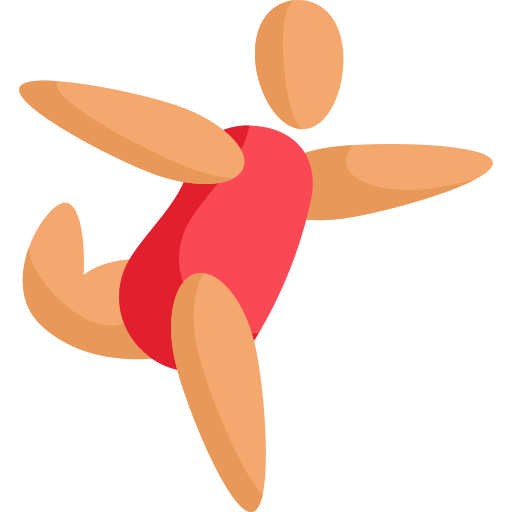DOWAGER’S HUMP SYMPTOMS AND CAUSES
Dowager's hump refers to an atypical outward curvature of the thoracic vertebrae in the upper back, which is typically caused by compression of the front part of the affected vertebrae due to osteoporosis. This results in a forward bending of the spine, or kyphosis, which gives rise to a hump-like projection in the upper back. Although both men and women can develop this condition, it is commonly observed in elderly women, hence the moniker 'Dowager's hump'.
Poor posture, characterized by habitual slouching or forward-leaning, is a significant contributing factor to the development of this condition. Given the modern-day prevalence of sedentary activities, such as computer use, and the prolonged periods of sitting associated with such activities, individuals are at an increased risk of developing this abnormality. Over time, a consistent habit of poor posture can lead to the formation of an irregular curvature of the upper vertebrae and the development of a mass of tissue at the base of the neck. It is essential to maintain proper posture and undertake appropriate preventative measures to decrease the likelihood of developing this condition.

Dowager's hump can be accompanied by a condition called forward head posture, colloquially referred to as "chicken head posture," where the head is projected forward from its normal alignment. This condition can lead to additional strain on the neck, with approximately 4.5kg of extra force being exerted on the neck for every 2.5cm of protrusion. Therefore, it is crucial to make a concerted effort to improve one's posture as a part of daily routine, to reduce the risk of developing such conditions.
- Rounded Shoulders
- A Hump on Your Back
- Feeling Tired or Fatigued
- Tight Hamstrings
- Muscles Fatigue Easily
- Gradual Postural Changes
- Chronic Pain in the Back, Neck, and Shoulders
- Loss in Height
- Multiple Vertebral Compression Fractures
- Protruding Abdomen
- Repeated Falls
- Back Stiffness
- Pain in the Hips
If you are always bent forward, that’s extra weight pulling on and straining the back. The forward curve is bad for disks and increases the risk of disk problems and neck fatigue. Our muscles aren’t made for that kind of curve. It can cause upper and lower back pain and even some difficulty with tightness in the legs. Maintaining good posture is the best way to prevent this problem.
To correct your walking posture, find your center by standing up straight and tall. Keep your chin parallel to the ground, your shoulders back, and your stomach in. Let your arms fall naturally at your sides. Imagine that a string is coming from the ceiling and pulling you upward as you stand tall. Visualize the string every time you need to get back into the proper position. Not looking at your phone all the time while walking will help a lot too.
Depending on your age and the severity, you often can improve or reverse this problem. You can accomplish this by strengthening the upper back muscles; increasing tone helps pull up the shoulders and the head. Weak spinal extensor muscles are associated with Dowager’s Hump. We have large back muscles holding up the spine. Exercise can strengthen the spinal muscles and thus hold the spine erect. This will help maintain the natural curvature of the spine. If you think only the spinal muscles can affect the spine, think again. In reality, posture is affected by many muscles of the body.
SENSORY NEURO DEFICITS
Impairments in your vision, hearing, and sensory system can significantly impact your ability to maintain balance and posture. When the vibratory input from your joints and sensory input is compromised, it can lead to impaired perception of erect spinal alignment. This is especially true for elderly individuals who may not realize that they are not standing upright.
In such cases, they tend to pitch their head forward more than younger individuals while moving.
Furthermore, individuals with hearing loss tend to rely more on their vision for movement and posture. It is important to note that maintaining spinal alignment is not just about your back; it involves the cooperation of several bodily systems working together. To address Dowager's hump, it is crucial to work on improving each of these systems.
CALL +6587141543 TODAY TO SCHEDULE YOUR FIRST APPOINTMENT
GET IN TOUCH
Contact Us
We will get back to you as soon as possible.
Please try again later.
SERVICES WE PROVIDE:
- Chronic Muscle Pain Relief
- Headaches and Jaw pain
- Upper Back Pain & Lower Back Pain Relief
- Muscular Imbalances / Body Misalignment
- Scar Tissue Therapy
- Functional Neurology Disorder
- Digestive Issues, Detox & Wellness
- Hearing Test and Hearing Aid

CONTACT US AT
WhatsApp: +65 87141543
Email: movewell@painreliefsg.com
Address: PS100, 100 Peck Seah Street, #10-19 Singapore 079333
© Copyright 2022 | All Rights Reserved | Pain Relief Therapy | Designed by CMO Media Lab

